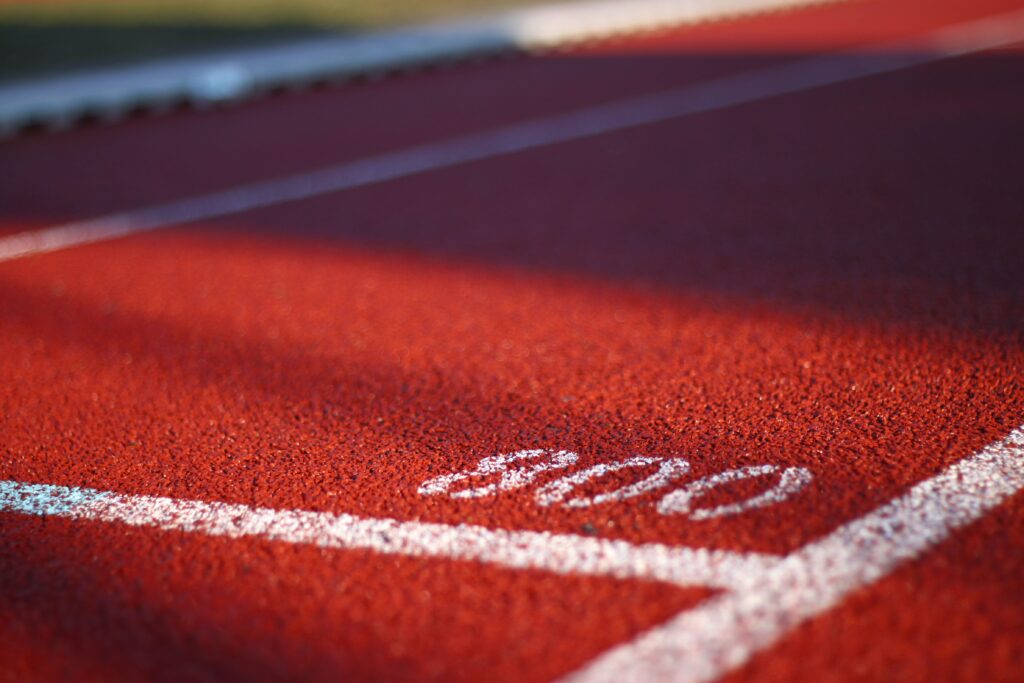Regulating Women Like They Are Shoe Stack Heights: Why World Athletics’ Hyperandrogenism Policy Violates International Human Rights Law
By Amy Vedder | Managing Editor
December 12, 2023
—
How would you feel if your genetic information was released to the world without your consent? What if you were forced to undergo unnecessary surgery? What if you were subject to hateful, racist, and transphobic remarks every time you went to work?
These are all things that happened to Caster Semenya and other athletes under World Athletics’ hyperandrogenism policy. World Athletics’ hyperandrogenism policy sets an arbitrary two-and-a-half nanomole per liter requirement for natural testosterone present in anyone running in any female event of any distance.[1] But don’t worry, World Athletics says, this does not invade your right to privacy, autonomy, and prohibition against torture. Why? Because there are ways you can still compete—as long as you don’t mind being forced to take hormone medication or undergo irreversible surgery to reduce your natural testosterone levels.
Caster Semenya, a South African 800-meter runner, has fought World Athletics since she was first banned in 2009, after being forced to take a sex test because she looked “suspicious.”[2] She has challenged the regulation all the way to the European Court of Human Rights, arguing that Switzerland (where World Athletics is located) violated her rights. Switzerland is alleged to failed to fulfil its obligations under the European Convention on Human Rights. Specifically, Switzerland is accused of violating its duty to prevent torture and inhuman or degrading treatment; to protect athletes’ rights to privacy and private life; and to prohibit discrimination against her as a queer athlete of color from the Global South.[3] The European Court of Human Rights recently ruled in July of 2023 that Switzerland violated her rights.[4] Switzlerand appealed this decision to the Grand Chamber and an final decision is still pending.
World Athletics forced Semenya to take unnecessary hormonal medication, publicly undressed her by releasing her genetic information without her consent, deprived her of her livelihood, and stole her right to personal autonomy, among many other violations.[5] Surely this is the easiest way to make women’s sports fair, right? If you were World Athletics, you would make sure to test every less invasive alternative before making someone undergo unnecessary surgery? Right?
No. In fact, there is a simple test that World Athletics could use instead of forcing athletes to undergo painful and dangerous medical procedures. Carbon-isotope-ratio tests can easily detect the difference between natural and artificial testosterone—eliminating the need for the hyperandrogenism policy.[6] The hyperandrogenism policy does not protect against doping athletes competing. It serves a simple two-fold purpose of barring clean athletes and imposing an outdated Western gender stereotype on athletes from around the world.
By narrowing World Athletics’ policy to only ban athletes from competing in races who commit doping violations with artificial testosterone, it would reduce outdated sex stereotypes and only punish athletes who have violated doping rules to have an unfair advantage. Further, an injunctive effect on the policy would reduce indirect discrimination, especially on queer women of color from the Global South. Modifying the policy in this manner would bring women’s sports in line with the standard practices used in men’s sports, since there are no analogous policies restricting men’s natural testosterone levels.
[1] Taylor Vann, Caster Semenya and the Policing of Competitive Athletic Advantage, 53 Conn. L. Rev. 1019, 1021 (2022); Molly Webster & Sarah Qari, Gonads: Dutee, Radiolab (Aug. 5, 2021), https://radiolab.org/episodes/dutee.
[2] Press Release, World Athletics, WMA Urges Physicians not to implement IAAF rules on classifying women athletes (Apr. 25, 2019); Gerald Imray, Semenya Taking Case to European Court of Human Rights, AP News (Feb. 25, 2021), https://abcnews.go.com/Sports/wireStory/semenya-taking-case-european-court-human-rights-76106450?cid=clicksource_4380645_15_hero_headlines_headlines_hed; Health & Science Official Documents, World Athletics, https://www.worldathletics.org/about-iaaf/documents/health-science (last visited Feb. 25, 2023).
[3] Council of Eur. et al., Guide on Article 3 of the European Convention on Human Rights: Prohibition of Torture, Eur. Court of Hum. Rts. 12 (1st ed., Aug. 31, 2022); Council of Eur. et al., Guide on Article 8 of the European Convention on Human Rights: Right to Respect for Private and Family Life, Home and Correspondence, Eur. Court of Hum. Rts. 7 (Apr. 30, 2022); Council of Eur. et al., Guide on Article 14 of the European Convention on Human Rights and on Article 1 of Protocol App No. 12 to the Convention: Prohibition of Discrimination, Eur. Court of Hum. Rts. 6 (Apr. 30, 2022).
[4] ‘A Long Time Coming’: Caster Semenya ‘Elated’ to Win Discrimination Case, Guardian (July 12, 2023), https://www.theguardian.com/sport/2023/jul/12/caster-semenya-elated-court-ruling-human-rights-discrimination-case#:~:text=“The%20European%20court%20of%20human,legal%20team%20in%20South%20Africa; Semenya Case Referred to European Rights Court’s Grand Chamber (Nov. 6, 2023), https://www.reuters.com/sports/athletics/semenya-case-referred-european-rights-courts-grand-chamber-2023-11-06/.
[5] Jamie Strashin, What’s the Real Problem with Caster Semenya, CBC Sports (May 14, 2018), https://www.cbc.ca/sports/olympics/summer/trackandfield/caster-semenya-cultural-bias-1.4661929.
[6] The Test That Caught Tom Danielson, VeloNews, https://www.velonews.com/news/the-test-that-caught-tom-danielson/ (last visited Feb. 25, 2023); Thomas Piper et al., Carbon Isotope Ratios of Endogenous Steroids Found in Human Serum—Method Development, Validation, and Reference Population-Derived Thresholds, 413 Analytical & Bioanalytical Chemistry 5655, 5661 (2021).

